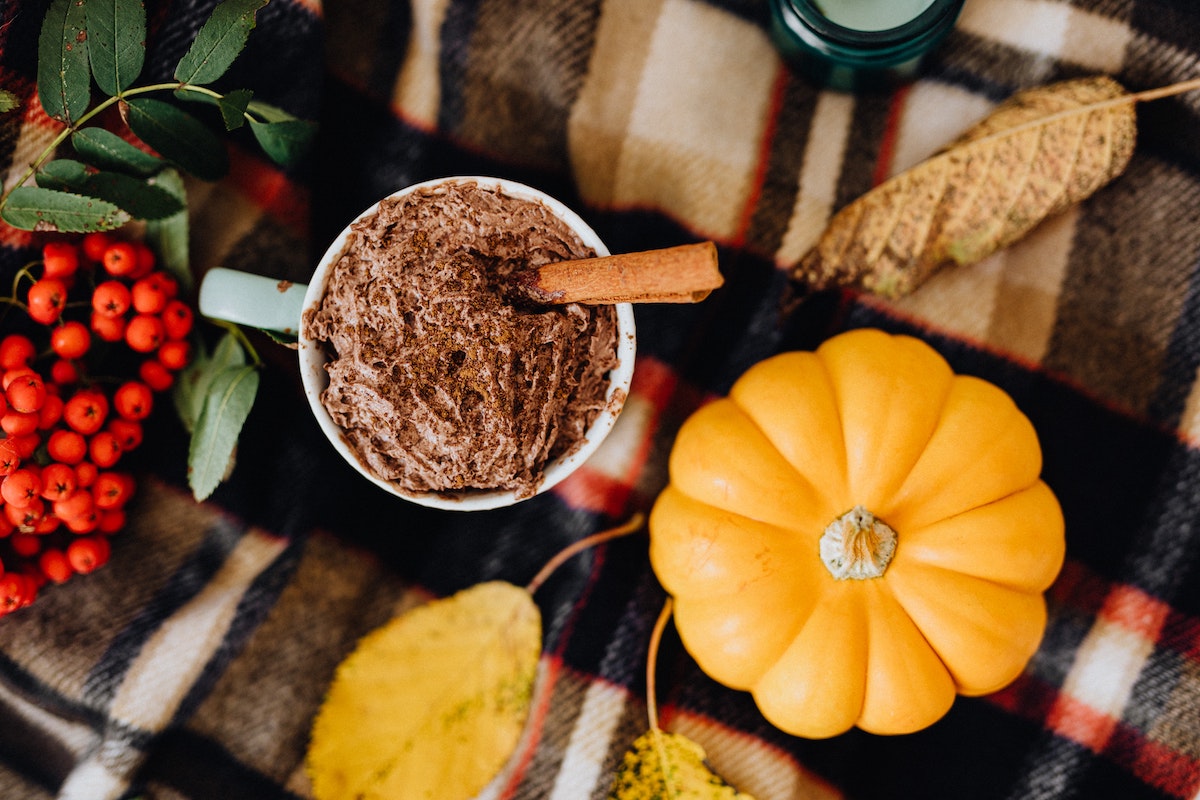
Fall is pumpkin spice and everything nice — you don’t have to tell nutrition experts twice.
“During the time of fall, there is a surprisingly higher uptake of pumpkin spice anything and everything,” said Dr. Amy Lee, a weight control, obesity, nutrition expert and the head of Nutrition for Nucific. “Maybe it brings back memories or nostalgia of childhood, or the marketing industry has basically typecasted that fall equals pumpkin spice.”
Dr. Lee has given talks for HBO, Hulu, PBS, and UCLA’s famed series, “Vital Signs,” and might be onto something.
While pumpkins have long been ubiquitous with fall harvests and Halloween, the Starbucks Pumpkin Spice Latte dropped 20 years ago. The long-anticipated drink, which usually comes out in August these days, took pumpkin fever to a whole new level. These days, Trader Joe’s and Costco are full of limited edition pumpkin spice cakes and pumpkin spice cookies that quickly sell out.
You may have heard pumpkin has health benefits, but is pumpkin spice healthy? Dr. Lee spilled some thoughts.

Is pumpkin spice good for your health?
Pumpkin spice isn’t merely a mix of spice derived from a pumpkin. Instead, pumpkin spice foods combine several spices for an oh-so-fall taste and smell. Some of these ingredients may even have some health benefits.
“The things that go into pumpkin spice, such as nutmeg, cinnamon, ginger, and allspice, contain health benefits,” Dr. Lee said.
Let’s dig in.
Nutmeg
Dr. Lee explains that nutmeg contains fiber, vitamins, and minerals that offer health benefits. According to Dr. Lee, these components include:
- Vitamin A, which can help with eye health.
- Vitamin C provides numerous benefits, including wound healing and anti-aging.
- Vitamin E is an antioxidant lauded for boosting skin health and vision.
- Manganese, which teams up with calcium and vitamin D to improve bone health, constipation woes, and insomnia.
- Copper, a trace mineral that Dr. Lee says aids with immunity.
- Zinc, another trace mineral that can help with hair, nails, and skin health
- Iron helps red blood cell integrity and production.
Cinnamon
Cinnamon sticks can liven up a warm drink. Dr. Lee says cinnamon is also a component of most pumpkin spice recipes and can add some health benefits. These perks include:
- Calcium for bone health
- Iron
- Magnesium
- Phosphorus
- Potassium
- Vitamin A
- Choline is a nutrient that helps with brain health. Some research suggests that 90% of people aren’t getting enough choline.
- Lycopene, an antioxidant also found in tomatoes, aids in heart and immune system health.
- Lutein, an antioxidant that boosts eye health antioxidant,
- Zeaxanthin, which also factors into improved eye health
Ginger
A popular spice in many recipes, ginger is part of the PSL mix. What’s in the spice? Dr. Lee says ginger includes:
- Vitamin B3 (niacin), which ads in digestion and nervous system health
- B6 is a vitamin that boosts metabolism and aids in water retention, helping you feel less bloated.
- Iron
- Potassium, an electrolyte needed for cellular communication and water retention
- Vitamin C
- Magnesium
- Phosphorus
- Zinc
- Folate, which helps with blood cell development
- Riboflavin, which allows the body to convert carbohydrates to energy
Allspice
Finally, allspice is an aromatic ingredient that may even have some heart health.
- Vitamin A
- Vitamin B6
- Vitamin C
- Riboflavin
- Niacin
OK, so does this mean that the Starbucks Pumpkin Spice Latte is healthy?
The vitamins, minerals, and other nutrients in pumpkin spice mixes don’t necessarily make the famous PSL healthy (sorry). For starters, the amount of those spices in the PSL is likely not enough to impact your health significantly. Sipping a PSL with Vitamin C isn’t the same as regularly eating fruits and vegetables like oranges and leafy greens.
Moreover, a grande Pumpkin Spice Latte with 2% milk also has 390 calories. Adding sugar and whipped cream adds to the calories and potential health impacts. For instance, added sugar boosts the risks of diabetes.
Pumpkin spice cookies and pumpkin spice cakes also may be full of added sugar and excess fat.
Other ways to get your pumpkin fix this fall
There’s nothing wrong with indulging in a Starbucks Pumpkin Spice Latte or your favorite Costco pumpkin spice cookie treats. And if you’re planning to drink a latte anyway, adding pumpkin spice to the mix isn’t going to make that latte any less healthy.
However, if you’re trying to eat more nutritiously, there are ways to have your pumpkin fix and stay healthy, too.
For instance:
- You can make the PSL healthier by ordering a tall one with skim milk (210 calories).
- Plain pumpkin coffee with skim milk and no sugar can also give you a taste of fall.
- Are you carving a pumpkin? Nosh on pumpkin seeds. An ounce of unsalted pumpkin seeds contains many of the above vitamins and minerals, including fiber, calcium, magnesium, and phosphorous. The snack will run you about 160 calories — not bad.
You also might consider getting your pumpkin fix with a cup of plain pumpkin puree, which boasts seven grams of filling and good-for-the-gut fiber. Other pumpkin health benefits include:
- Vitamin A
- Vitamin E
- Vitamin C
- Antioxidants that may reduce inflammation
Pumpkin is also a low-FODMAP food. Because of this, people with irritable bowel syndrome (IBS) are more likely to be able to tolerate pumpkin. If you’re concerned about your diet, meeting with a registered dietician can help. Your primary care doctor can provide you with a reference.
Editors' Recommendations
- How much protein do you really need? Here’s how to calculate it
- How to throw the ultimate fondue party, according to experts
- A chef’s tips for making a dry-aged roast duck recipe that beats your dried-out Thanksgiving turkey any day
- 5 Thanksgiving dinner hacks to make your life a whole lot easier
- This Costco pumpkin pie hack turns 2 whole pies into 60+ mini desserts for Thanksgiving





